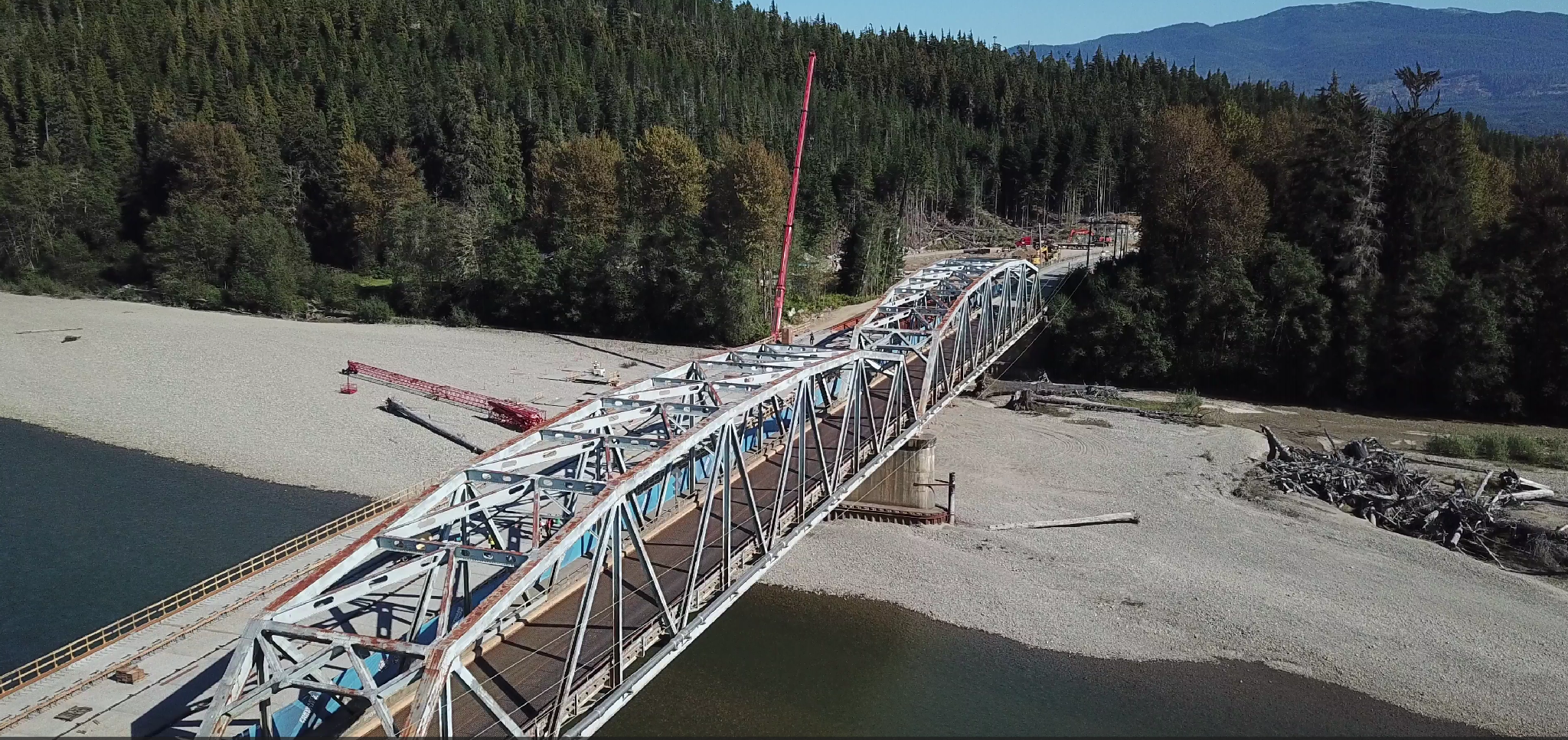The District of Kitimat is replacing the Haisla Bridge to provide safe and reliable access across the Kitimat River for years to come.
The Haisla Bridge serves as a critical corridor between the community, industry, and natural environments. It further serves as a critical connection between the Canadian and global economies.
With growing economic activity in the Kitimat area, there are expectations for increased daily traffic volumes, oversized load deliveries, and construction traffic.
Built in 1954, the existing bridge is operating at the end of its intended design life and requires extensive and ongoing maintenance.
The new bridge will be built to modern design and safety standards and will address future capacity constraints and bottlenecks. The new bridge will also mitigate the potential of a future failure or closure of the existing bridge. In this way, the community and major industrial employers and services can best remain connected.
Haisla Bridge Celebration
Removing the old bridge

The old Haisla Bridge being moved on September 30, 2023.
The protection of the natural environment and the safety of the community and construction workers is a top priority of the District of Kitimat on all aspects of the Haisla Bridge Replacement Project, including the demolition of the existing bridge. As such, the demolition of the existing bridge will have multiple layers of safety procedures to mitigate risks to public and worker safety, as well as containment procedures to mitigate risks of hazardous materials entering the river ecosystem.
Here is a summary of the work planned so far for the bridge removal:
Ledcor-Haisla Limited Partnership (“LHLP”) is proposing to remove the existing bridge using a jack and slide method. With this method, the existing truss bridge spans (one at a time) will be jacked above the elevation of the new bridge, slid onto the new bridge, then transported with dollies to the west side (Service Centre) for shearing and disposal. Because of the immense weight, certain components of the existing bridge must be removed in advance of the jack and slid procedure, including:
- Concrete sidewalk
- Sanitary pipe
- Watermain pipe
- Gas line
- Telecommunications conduits
- Deck grating
- Stringers
Various containment procedures will be used dependent upon the type of work being performed and the location of the activity. These include:
- Aerial Work Platforms (“AWPs”) equipped with a flame-resistant debris net within the basket to catch debris, paint flakes, or smaller bridge elements (e.g., bolts) that may fall during the disassembly of the bridge (primarily underneath the east span).
- Since it won’t be possible to reach the entire underside of the west span from an AWP from the gravel bar or the west embankment, a combination of AWPs and swing stages will be used to provide worker access underneath the west span. These swing stages have a solid deck and toe boards within the baskets and platforms to catch debris/materials.
- Geotextile fabric will be placed on the gravel bar between the east and center piers.
- A flame-resistant debris net will be suspended on aircraft cables underneath the west span with non-locking carabiners, allowing for it to easily slide between piers. The netting will have a 1/8” hole diameter which will be small enough to capture any fallen debris.
- Any fallen debris will be removed at the end of each shift and as needed throughout the shift.
- All equipment working near the river will have biodegradable, non-toxic hydraulic fluid and spill trays will be located underneath to collect any leaks. Refueling will be conducted a minimum of 30m away from the high-water mark.
- Fish spawning deterrent was installed on June 30th around the existing center pier. The deterrent will be inspected by the QEP daily to ensure integrity. The spawning deterrent and low water levels ensure no risk of impacting emerging juvenile salmon.
Before and After
Just for fun, a before and after photo of our new bridge crossing.







